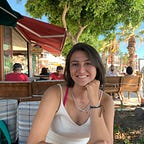“WE START WITH BEDREDDIN AND END WITH BEDREDDIN”
The history education given in schools is expressed in a style defending the view that generally prevails from the past to the future, and it is mentioned the revolt of Sheikh Bedrettin is a rebellion formed by the use of disintegration and distrust against the state authority, which emerged during the interregnum period. However, it would be the right decision to understand Sheikh Bedrettin’s thoughts and vision, the conditions of his time, the process that created these conditions, and how the period might show people, and to approach this rebellion from these aspects. It is important to interpret the importance of the Sheikh Bedrettin rebellion for the interregnum, knowingly interpreting Bedrettin’s life as mentioned in the documentary, and to know what was the effect of the people in the state at that time. It can be said the 13th-15th centuries were a homogeneous unity for Anatolia, united despite cultural differences and formed its own essence. It is said during the interregnum, Bedrettin rebelled to bring Christians and Muslims together in his own opinion and to make them equal in a kind of pre-communist state in which they shared all property. This idea of union actually fits with peace in the homogeneous structure of the period, and in the interregnum, the event is not only a fight for the throne, but also a matter of which vision will be effective in the future. One of the words in the documentary, “jacquerie”, means the revolt of the peasants who have economic and social problems. Sheikh Bedrettin’s rebellion was such a rebellion, and it was born from Bedrettin’s religious-mystical ideas, and then, with these ideas passing on to the table of life, it was the result of a vital movement that included many people without listening to religion and language, making them friends and companions of ideas rather than neighbors. If we interpret the rebellion according to Bedrettin’s movements and route, it is easy to interpret he went to gather political supporters according to some historians. Cemal Kafadar and the historians in his opinion tried to find and understand Bedrettin’s own vision by blending Bedrettin’s religious thoughts with his ideas reflected in social, economic and other fields, and for example, Bedrettin’s ideas on the idea of representation could actually be reflected in the political arena. He did not do this revolt only for religious purposes. Although the rebellion emerged during the disintegration of the Ottoman state, the main problem is that people’s perception of the world will begin to change, and the fear of others. Historians, like those before them, have different ideas. From the rebellion to the present, historians are in disagreement as to whether Sheikh Bedrettin was a person of “sevi” like Yunus, or whether his aim was political and religious domination. My interpretation of Bedrettin’s own works on the world stage, where no one is completely good or bad, is that the idea covered in this documentary is that Bedrettin is a person with equality, justice and an open vision and is full of ideas that will solve the problems of those who support him. Maybe if I had watched a documentary with a more strict and conservative thought, my view of Bedrettin would not have been positive and flexible. However, one of the factors that influenced me was Bedrettin’s motto of “Be brave to come out with what you know in front of everyone”, who adopted the enlightened thought that Kant said, and it also helped me to call his world view innovative and revolutionary. Historians’ view of this rebellion and Bedrettine need not be harsh. Bedrettin is not the other side of a fight that we do not need to be a party to, but someone who wants to make sense of the fight and solve it.
